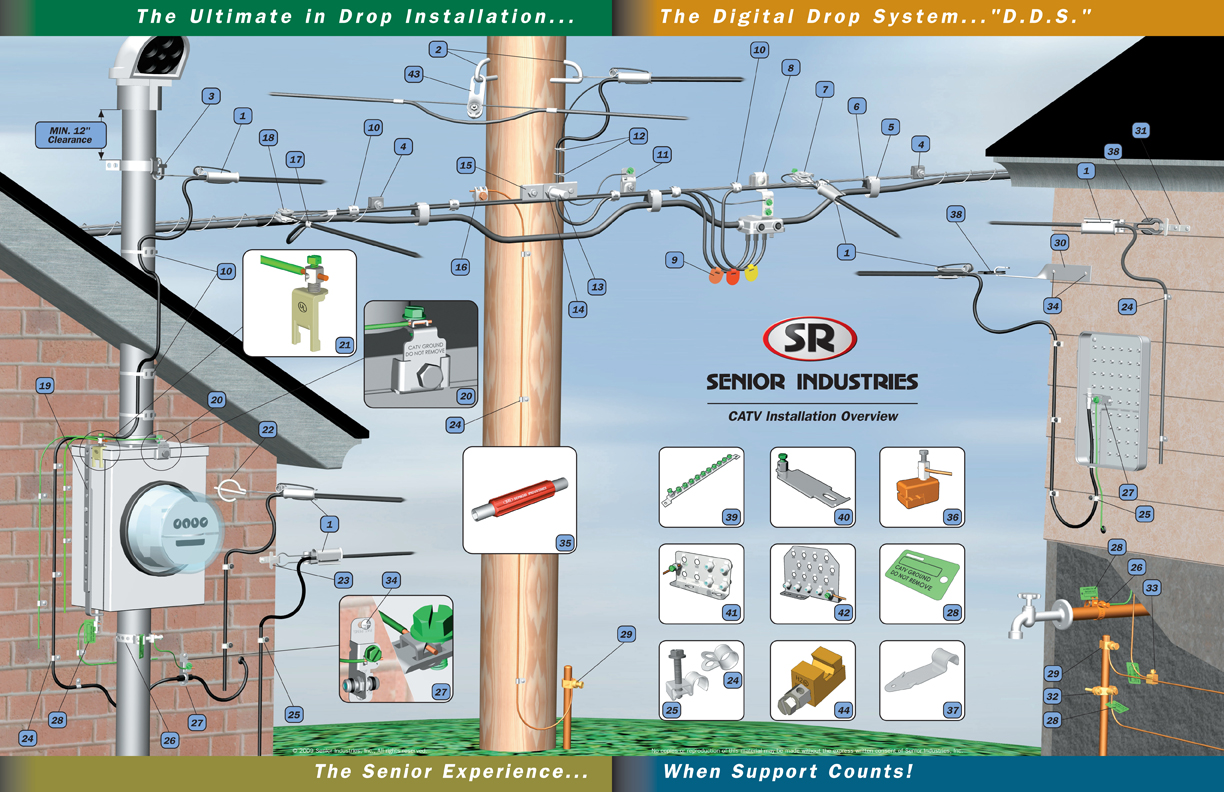I knew I could count on Doug to provide some solid links - thanks, buddy!
I re-opened this thread because it's a lot easier to say 'that looks wrong' ... than it is to say 'I know how to do it right.'
The meter-pan clamps and sundry 'pipe clamp like straps' we see might seem inadequate - but only very recently has the NEC required electricians to provide a bonding point on the OUTSIDE of the service.
I raised the issue of mounting, not just because of my picture, but because so many 'good' installs hang the wire from the service mast - something the NEC prohibits.
As you might have gussed, I have my own dog in this fight. My current accomodtions are served by a cable install far worse than the picture at the top of this thread - something I intend to address.
This - and the inadequacy of the local parts houses - reminded me that most 'real' electricians actually have very little direct experience with CATV. So - Let's have a learning opportunity

![[Linked Image]](https://www.electrical-contractor.net/forum/RS/550NSierra_2.jpg)
![[Linked Image]](https://www.electrical-contractor.net/forum/RS/550NSierra_2.jpg)
